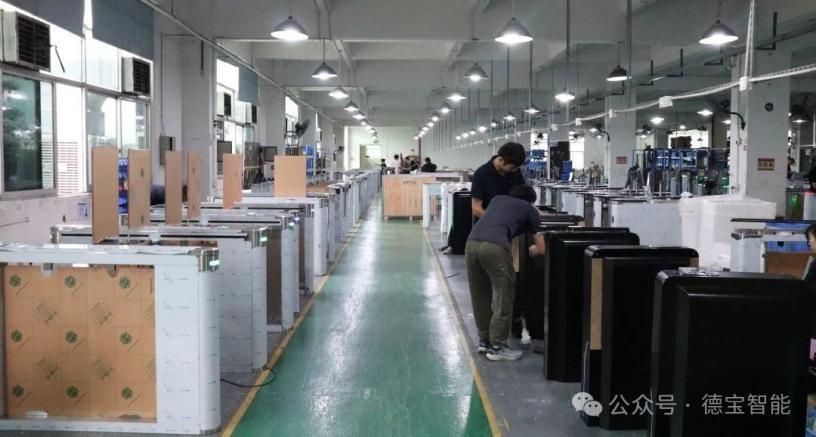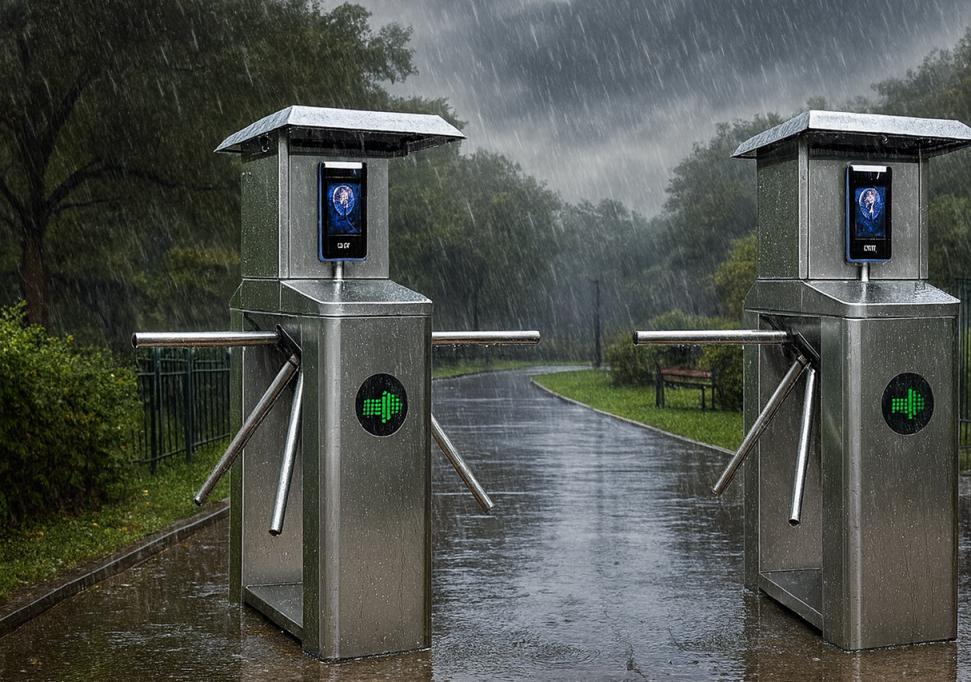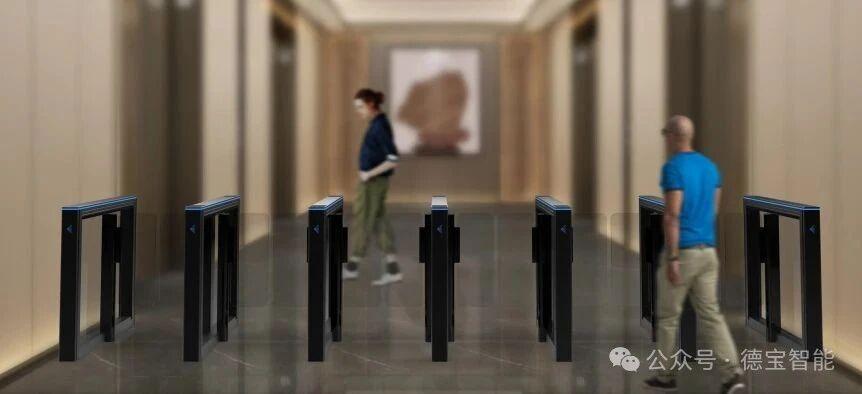Flap Barrier Features You Can’t Afford to Ignore


Flap barriers are a critical component in modern access control systems. They’re often an afterthought during planning, but overlooking crucial features when selecting one for a project can lead to increased costs, operational inefficiencies, and potential safety hazards. Whether you’re installing them in an office, a stadium, or a public building, every flap barrier you choose must meet specific criteria to ensure safety, security, and efficiency. Missing even one important specification can make a world of difference in the long term.
In today’s ever-evolving technological landscape, flap barriers serve far more than the simple function of allowing or blocking access. They’re designed with advanced sensor systems, robust safety features, and integration capabilities to seamlessly interact with other security measures. Understanding these key features isn’t just about making the right purchase; it’s about ensuring smooth installation, long-term durability, and user satisfaction.
In this guide, we’ll explore the critical flap barrier features that you absolutely must consider before making your purchasing decision. From advanced sensors and safety mechanisms to emergency override functions, we’ll provide you with all the knowledge you need to make an informed choice.
Advanced Sensor Systems: The Heart of Modern Flap Barriers
When choosing flap barriers, one of the first elements to consider is the sensor system. Modern flap barriers are equipped with advanced sensor technology that allows them to function with precision and efficiency. These sensors are designed to detect a range of activities and movements, ensuring that only authorized individuals pass through while preventing unauthorized access.
The most common types of sensors in flap barriers are proximity sensors, infrared sensors, and motion sensors. Proximity sensors are great at detecting when an individual is nearby, triggering the barrier to open automatically. This minimizes the need for physical contact, enhancing hygiene and convenience in high-traffic areas. Infrared sensors, on the other hand, detect movement and help the system react quickly to changes in traffic flow. They are also essential for ensuring the system can function smoothly, even in low-light conditions.
Real-world applications of these sensors are wide-ranging. For instance, high-tech sensors can prevent unauthorized access by detecting when an individual is attempting to bypass the barrier. Sensors can also measure traffic density, adjusting the flap barrier’s response time to accommodate peak periods, which enhances operational efficiency. In areas with high security, these advanced sensors help ensure that every individual is properly authorized before being allowed to pass through.
These sensors also contribute to energy efficiency. With automatic opening and closing based on sensor readings, barriers don’t waste energy, further contributing to cost savings.
Learn more about barrier functions to better understand sensor systems and their impact on barrier operation.
Safety Features You Can’t Overlook
Safety should always be at the forefront of your mind when selecting a flap barrier for any facility. Modern barriers are equipped with multiple safety features designed to prevent accidents and ensure smooth user experiences. These features range from emergency stop functions to anti-collision mechanisms, all designed to make the barrier safer to use.
Emergency Stop Functions are essential in situations where the barrier may malfunction or cause harm to users. A properly implemented emergency stop ensures that the barrier halts instantly when required, allowing for quick intervention before a serious accident occurs. Additionally, anti-collision mechanisms are built into many barriers to prevent any damage to the system or harm to users. These sensors detect obstacles or physical contact with the barrier, automatically reversing or halting the flap’s movement to prevent injuries.
Impact Resistance is another crucial safety feature. The materials used in constructing the barrier need to be strong enough to resist significant wear and tear, including damage from physical force or vandalism. A flap barrier with durable, impact-resistant materials is less likely to break down or become a safety hazard over time.
Many modern flap barriers are designed to meet international safety standards, ensuring they are fully compliant with regulations. This is particularly important for facilities that prioritize safety and security, such as government buildings, airports, and high-security venues. Failure to meet these standards can result in legal liabilities or operational disruptions.
Throughput Capacity: Handling High Traffic Efficiently
Throughput capacity refers to how efficiently a flap barrier can handle high volumes of traffic, and it’s a crucial factor when selecting a barrier for busy environments. The throughput of a flap barrier determines how many people can pass through in a given period, impacting both security and user experience.
For facilities such as airports, train stations, and stadiums, throughput capacity is a top consideration. A barrier that can’t handle the volume of users passing through it during peak hours can quickly cause bottlenecks, leading to delays and frustration for users. Furthermore, a low throughput barrier may strain the system, reducing its longevity and leading to more frequent maintenance needs.
To determine the right throughput capacity for your needs, it’s essential to analyze traffic patterns. How many people pass through the facility each day? During peak hours, how many users need to pass through the barrier in a short period? A barrier’s throughput should align with these patterns to ensure smooth operations.
Optimizing throughput is possible with advanced systems that automatically adjust the speed and sensitivity of the flap barrier, allowing it to accommodate fluctuations in traffic. Barriers equipped with these features are ideal for environments that experience varying traffic loads throughout the day.
Anti-Tailgating Technology: Strengthening Security
One of the most critical security features to look for in a flap barrier is anti-tailgating technology. Tailgating, the act of one person following another without proper authorization, is a common security threat in access control systems. It’s especially prevalent in areas with high traffic, where it may be easy for an unauthorized individual to sneak through just after an authorized user.
Anti-tailgating technology works by ensuring that only one person passes through the barrier at a time. This is typically achieved through sensors that detect the presence of a second person trying to enter just after an authorized individual. If the system detects a second individual, the flap barrier will not open, or it will immediately close, preventing unauthorized access.
The technology used in anti-tailgating systems can vary, but it typically involves a combination of visual monitoring, sensors, and sometimes even biometric data (like facial recognition) to verify the identity of the individual passing through. These systems are invaluable in preventing security breaches, especially in high-security areas such as corporate offices, data centers, and government buildings.
Integration Capabilities: Seamless Access Control Systems
Today’s flap barriers are no longer standalone devices; they are designed to integrate seamlessly into broader security and access control systems. Integration capabilities allow you to manage multiple security features from a single platform, making it easier to monitor and control access across a facility.
Modern barriers can be integrated with various access control methods, such as RFID cards, biometric scanners, and mobile access systems. This integration allows for smoother and more streamlined access, reducing friction for authorized users while enhancing security. For example, users can use their RFID cards or smartphones to gain access without needing to manually interact with the barrier, improving efficiency.
Integration also plays a role in centralized control. By connecting your flap barriers to an existing security system, you can monitor access events, track security breaches, and manage maintenance schedules from one interface. This provides an extra layer of security and ensures you’re always aware of any unusual activity.
Explore access control features here for more details on how integration enhances security.
Material Durability: Building Long-Lasting Barriers
When it comes to flap barriers, material durability should never be underestimated. Flap barriers are constantly exposed to various environmental factors, from extreme weather conditions to physical abuse. Selecting a barrier made from strong, durable materials is crucial for ensuring that the barrier will last over time, withstand wear and tear, and continue performing as expected without frequent repairs or replacements.
Common materials used in flap barriers include stainless steel, tempered glass, and high-grade aluminum. Stainless steel is widely known for its strength and resistance to corrosion, making it an ideal choice for outdoor installations or areas with high humidity. Tempered glass is often used for its aesthetic appeal and strength, providing a sleek, transparent look while also being incredibly resistant to impact. High-grade aluminum offers a lightweight yet sturdy option that is resistant to rust and corrosion, making it an ideal choice for both interior and exterior environments.
Durability doesn’t just refer to the ability to resist physical damage. The materials used in flap barriers must also be able to withstand vandalism and other forms of intentional damage. In high-traffic or high-security areas, this is especially important. For example, outdoor installations might be more vulnerable to environmental conditions such as rain, snow, or extreme temperatures, which can cause corrosion or material degradation over time. Choosing a barrier with durable, weather-resistant materials will help ensure long-term performance and reduce the need for costly repairs.
Learn more about flap barrier specifications to ensure the materials used in your barrier will meet your needs.
Emergency Override Functions: Maintaining Access Control in Crisis Situations
In any access control system, having an emergency override function is essential. In the event of a power failure, fire, or other emergencies, it’s critical to be able to override the flap barrier and ensure people can exit the building safely and quickly. Emergency override functions ensure that the barrier can be opened manually or automatically, providing quick access when needed most.
A key element of emergency override is the ability to control the barrier remotely. In cases of an emergency, facility managers or security personnel can activate the override to open the flap barriers, allowing for mass evacuations or quick exits. This feature is particularly important in buildings where there is a large volume of foot traffic, such as stadiums, airports, or office buildings. In such situations, time is of the essence, and a barrier that can’t be opened quickly could cause dangerous delays.
Some flap barriers come with manual override options, which allow personnel to physically unlock or open the barriers without relying on electrical systems. This is an important feature to look for, as it ensures that the system remains operational even in cases of power outages. These manual overrides are typically incorporated into the system design, allowing for quick and easy intervention.
Examples of emergencies where override functions are crucial include fire evacuations. Natural disasters and situations requiring the rapid movement of large groups of people.
Conclusion
Selecting the right flap barrier involves more than just choosing a simple barrier to control access. It’s a decision that requires careful consideration of various features, each of which can impact the safety, efficiency, and longevity of the system.
As discussed in this guide, understanding the key flap barrier features. Such as sensor technology, anti-tailgating systems, integration capabilities, and throughput capacity. Ensures that you can make an informed decision that meets your needs.
Checklist: Must-Have Flap Barrier Features
When evaluating potential flap barriers for your facility, it’s important to ensure that the system you select includes the following features:
- Advanced Sensor Systems: Make sure the flap barrier is equipped with responsive, accurate sensors for detecting movement and proximity.
- Safety Features: Look for barriers with emergency stop functions, anti-collision systems, and impact resistance to prevent accidents.
- Throughput Capacity: Verify that the barrier can handle your facility’s traffic volume without performance issues.
- Anti-Tailgating Technology: Ensure that the barrier includes mechanisms to prevent unauthorized access by tailgating.
- Material Durability: Confirm that the barrier is made from durable, weather-resistant materials to ensure long-term performance.
- Emergency Override: Ensure that the barrier includes manual and automatic override functions for emergency situations, ensuring swift evacuation when necessary.












